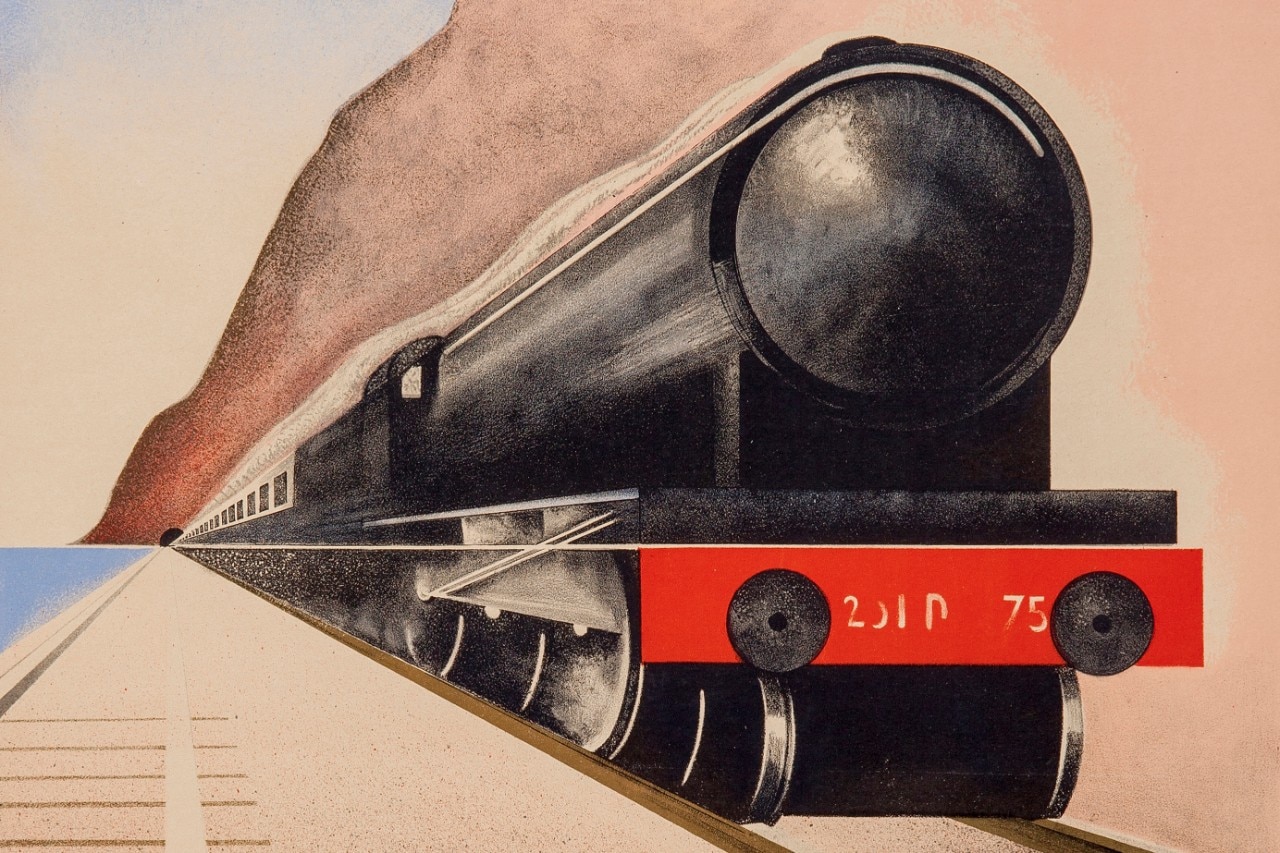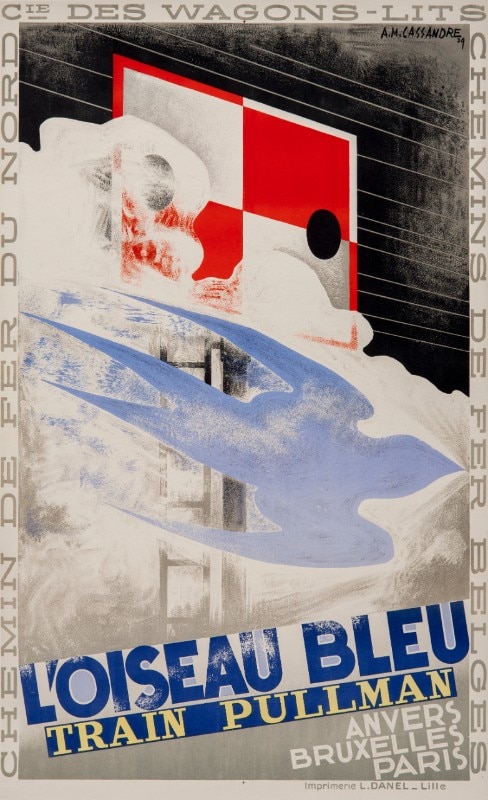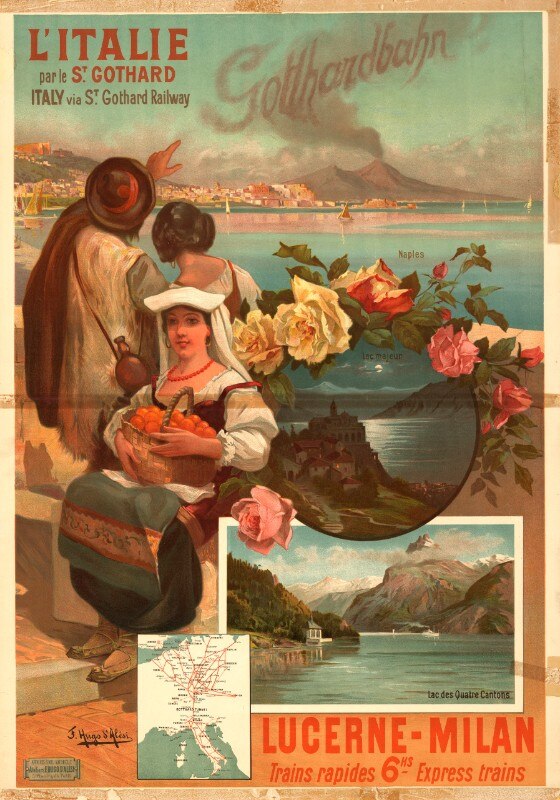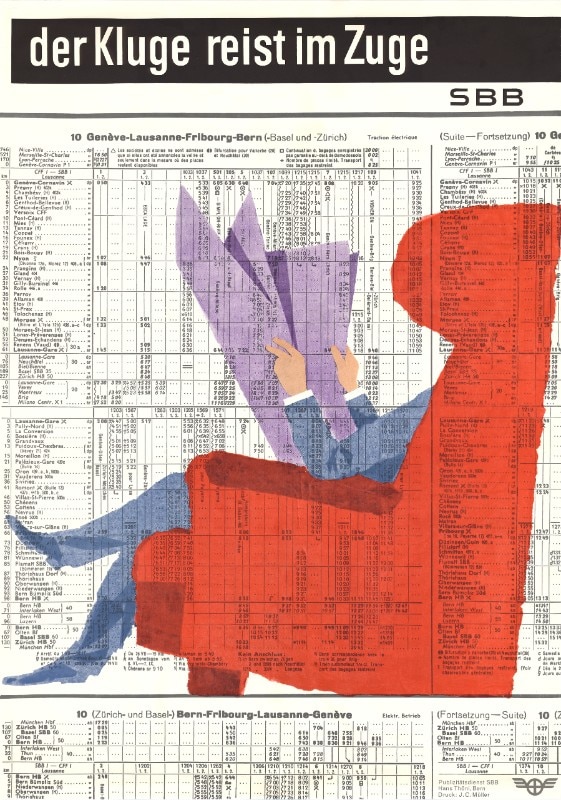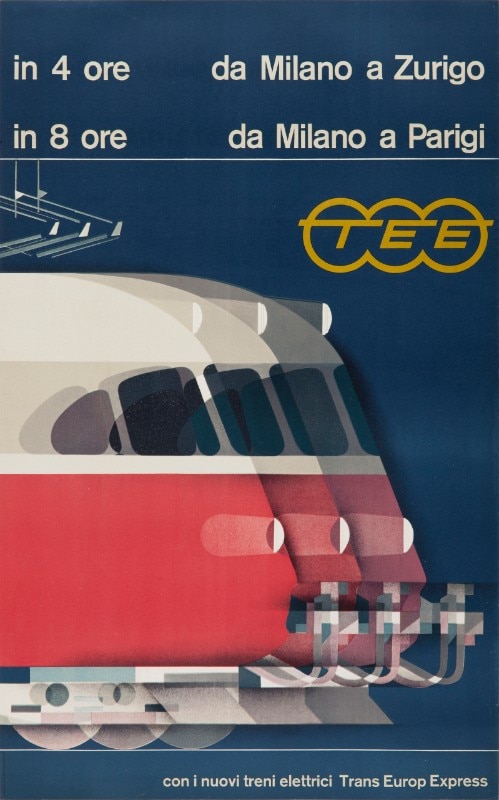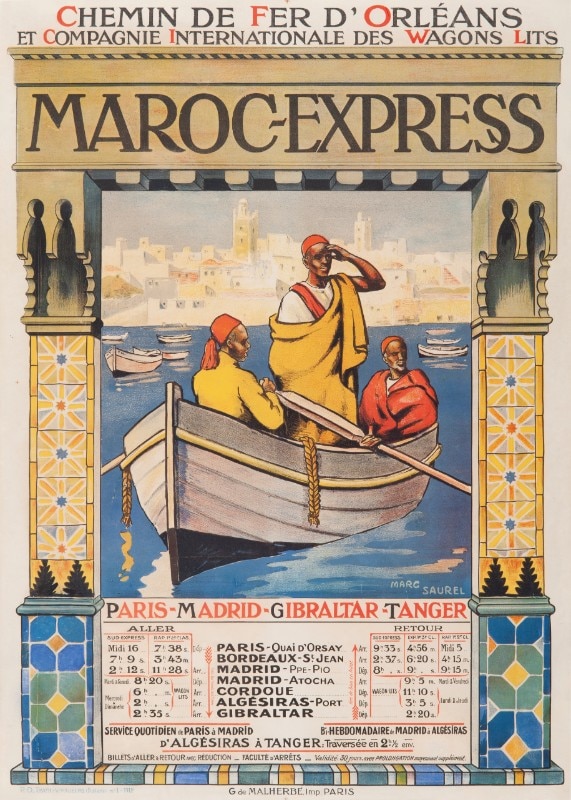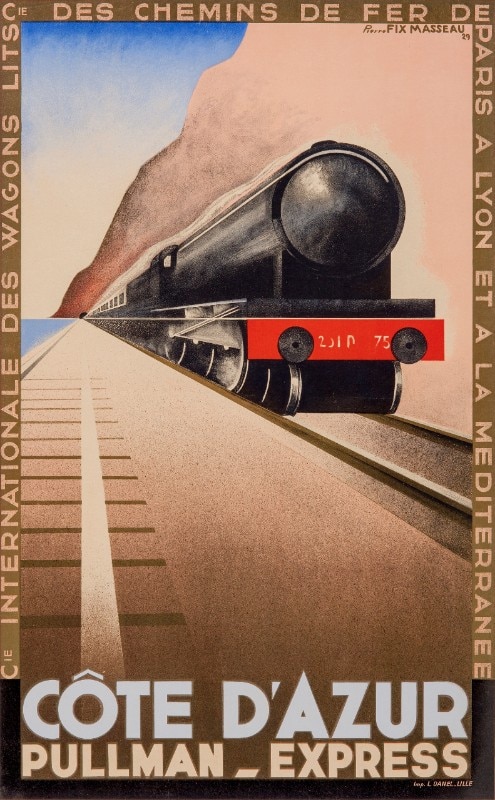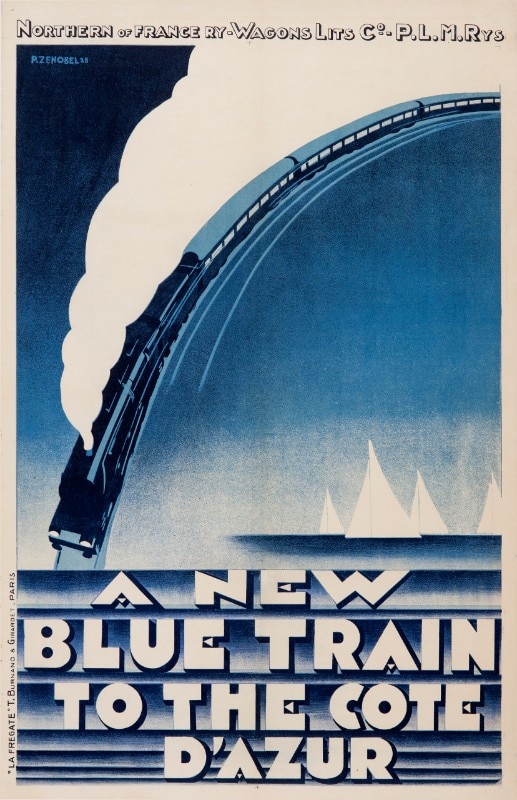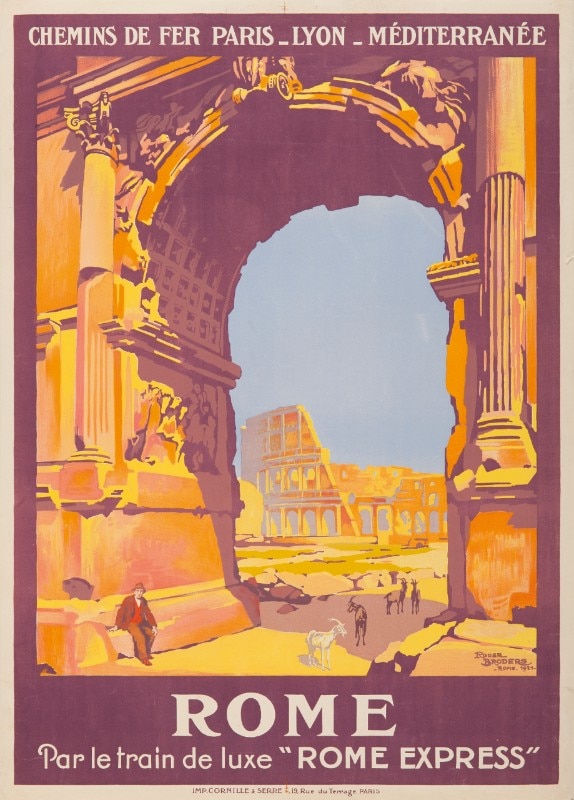This article was originally published on Domus 1067, April 2022.
The space that separates railway tracks has always been a universal gauge: 1,435 mm, a distance that has allowed us to travel around the globe, dismantling cultural barriers along the way. The equivalent of a leap, it also sparked a long journey that has influenced graphics as well as art and design.
When the first stretches of tracks were laid, train companies also began catering to the new and vaster commercial and industrial middle classes, whose desire for recreation and leisure was more mobile than that of the age-old aristocracies. Rail operators quickly realised the importance of investing in commercial poster production to communicate in a more exciting way. These companies (initially private then nationalised) became enlightened patrons of graphic designers and artists who were able to express the charm of trains on paper, but also describe the beauty of places that could be visited along the journey. Poster design in those years contributed to the birth of a dream, combining the appeal of the Mediterranean and the Orient with the myth of progress: bold bridges spanning valleys, speed at night, the advent of electricity and, as the link between all this, luxury. The artistic process engaged prestigious figures such as Fortunato Depero, Cassandre, Marcello Dudovich, Augusto Giacometti and Salvador Dalí.
Besides their advertising and practical purposes, train posters also had a political function: to promote the tearing down of linguistic and territorial barriers and facilitate new economic alliances between countries. Graphic design contributed to creating the railway myth of the 1800s and 1900s. But it also codified a visual vocabulary of signs and symbols, proving it could manage the design complexity of railway systems and their articulated presence across the land: from the way in which coaches and wagons were identified to signage systems for transit and stations; from the interface of control panels to tickets; from clocks to technical hours for rail workers and the public.
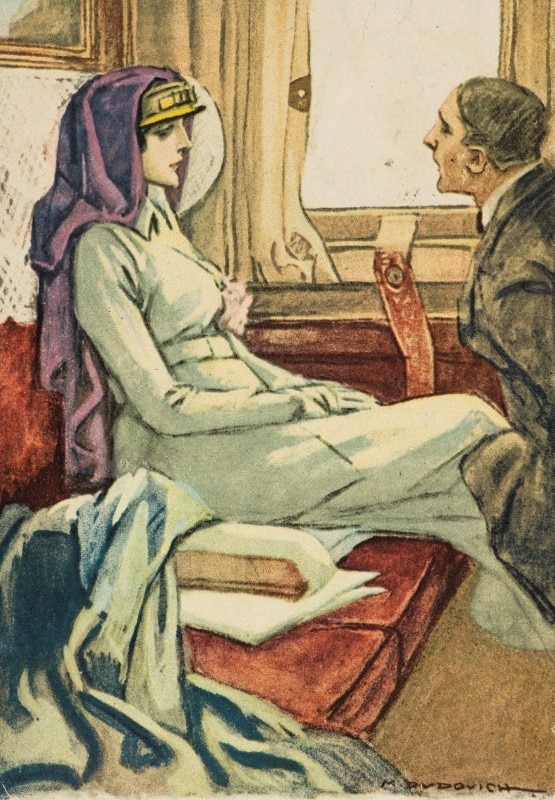
The graphic and print panorama of the railway universe thus became a vehicle conveying many of the values and criteria of contemporary Swiss graphic design: concision, simplification, clarity, modularity, standardisation, functionality, a systematic approach and formal beauty. It’s no coincidence that this journey leads us to Switzerland, the nation-symbol of railway progress, and especially to Chiasso, a frontier junction where a rich exhibition at the m.a.x. museo uses poster design to describe how our way of seeing trains has changed over time, from the beginnings to the present day.


